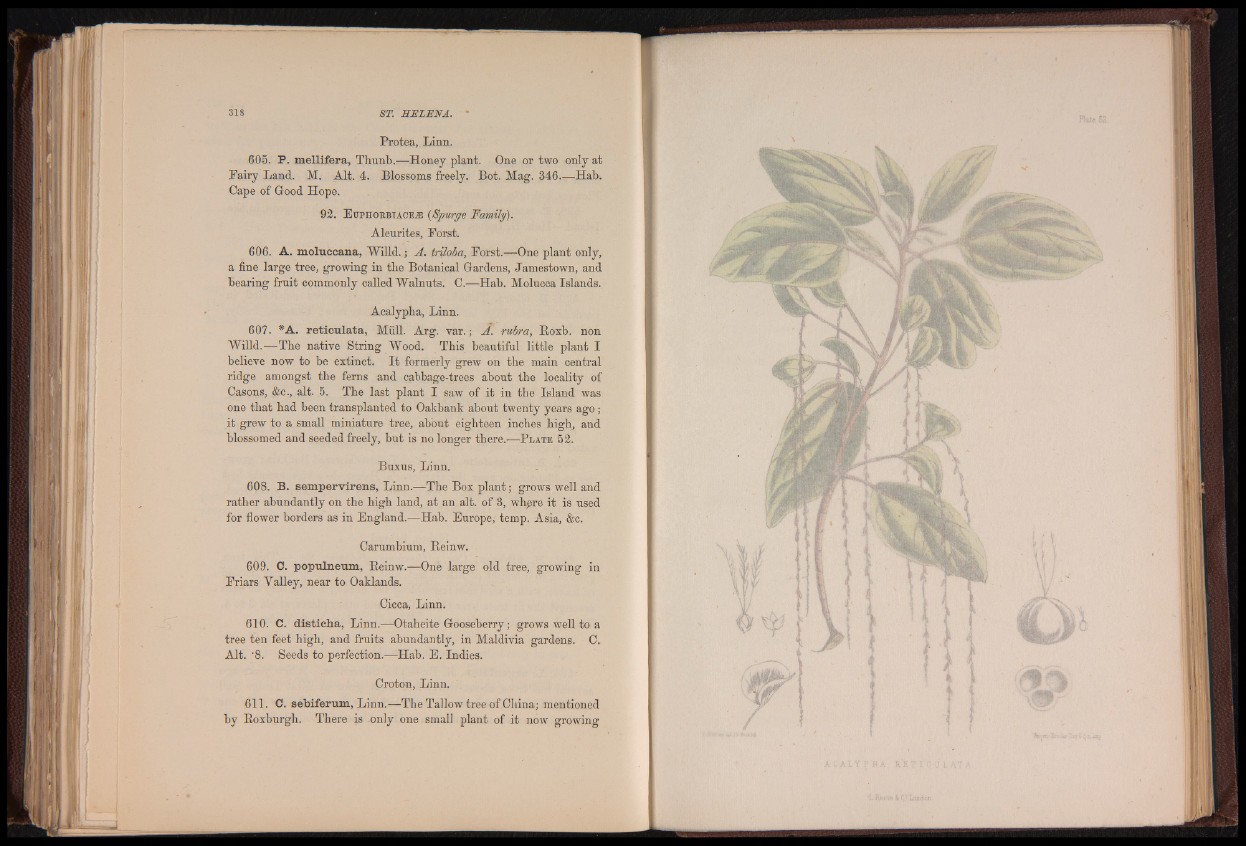
Protea, Linn.
605. P. mellifera, Thunb.—Honey plant. One or two only at
Fairy Land. M. Alt. 4. Blossoms freely. Bot. Mag. 346.—Hab.
Cape of Good Hope.
9 2 . E o ph o r b ta c e « (Spurge Family).
Aleurites, Forst.
606. A. moluccana, Willd.; A. triloba, Forst.—One plant only,
a fine large tree, growing in tbe Botanical Gardens, Jamestown, and
bearing fruit commonly called Walnuts. C.—Hab. Molucca Islands.
Acalypha, Linn.
607. *A. re ticula ta , Mull. Arg. var.; A. rubra, Boxb. non
Willd.—The native String Wood. This beautiful little plant I
believe now to be extinct. I t formerly grew on the main central
ridge amongst the ferns and eabbage-trees about the locality of
Casons, &c., alt. 5. The last plant I saw of it in the Island was
one that had been transplanted to Oakbank about twenty years ago;
it grew to a small miniature tree, about eighteen inches high, and
blossomed and seeded freely, but is no longer there.—P l a t e 5 2 .
Buxus, Linn.
608. B. sempervirens, Linn.—The Box plant; grows well and
rather abundantly on the high land, at an alt. of 3, whpre it is used
for flower borders as in England.—Hab. Europe, temp. Asia, &c.
Carumbium, Reinw.
609. C. populneum, Reinw.—One large old tree, growing in
Friars Valley, near to Oaklands.
Cicca, Linn.
610. C. disticha, Linn.—Otaheite Gooseberry; grows well to a
tree ten feet high, and fruits abundantly, in Maldivia gardens. C.
Alt. '8. Seeds to perfection.—Hab. E. Indies.
Croton, Linn.
611. C. sebiferum, Linn.—The Tallow tree of China; mentioned
by Roxburgh. There is only one small plant of it now growing